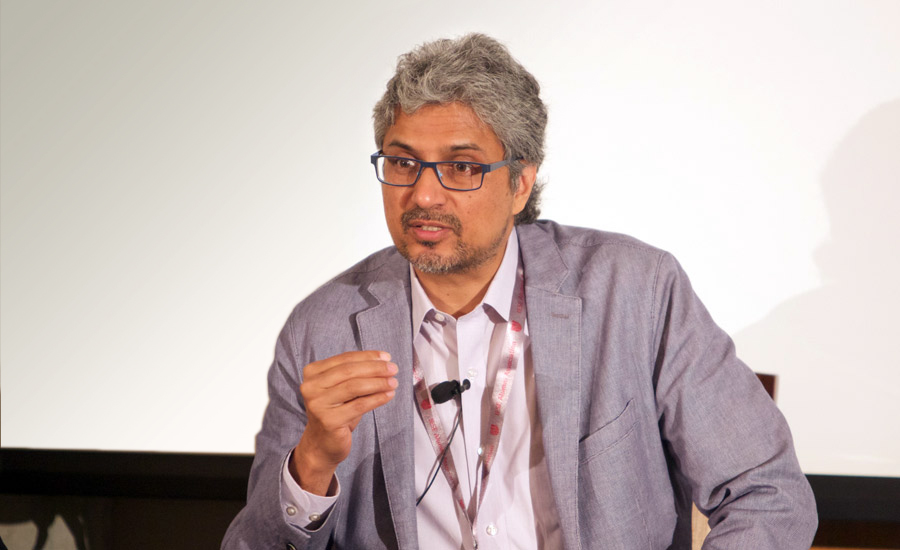
"Cognitive computing is a partnership between people and machines—and it’s changing industries.”
That was a key insight from Guruduth S. Banavar, VP of Cognitive Computing at IBM, who presented at an Alumni Special Event at IESE’s New York City Campus.
The supercomputers that Banavar and his team have developed are nothing like the frustrating “robots” that run many a help desk, said IESE Professor Josep Valor, introducing Banavar.
“These machines understand natural language and solve problems the way humans would.”
Watson: The Multi-Faceted TV Star
When IBM’s computer system “Watson” beat human champs on Jeopardy five years ago, it was a breakthrough moment for artificial intelligence.
“Humans incorporate social and emotional cues into our language, leading to a lot of ambiguity. The questions on Jeopardy, which often contain puns and metaphors, are often hard even for people to understand,” Banavar said.
Watson is not a monolithic system, Banavar said, but rather a set of components (including decision analytics capabilities) built atop a huge amount of data. Using the “same portfolios of technologies,” Watson can be configured to suit different scenarios and industries.
The unstructured data that lay underneath Watson is not useful, Banavar said, except when “you extract the context, the meaning, and the actual insights that are available in the data. We call that process data curation. I believe it’s similar to what software engineering was 50 years ago, and could be an even bigger profession.”
Revolutionary Business Applications
Machines can contextualize information and knowledge that has been generated over a long period of time, and recall and analyze past decisions objectively. So what if there were a suite of tools like that embedded in your boardroom, while you were making decisions, Banavar asked.
A group of executives contemplating a new acquisition, for example, could have Watson run though databases to find companies that fit very specific criteria, such as a particular corporate structure, profit margin, and number of employees. Watson can identify the top prospects and then compare them side-by-side before making a recommendation.
The human managers would make the final call, though.
“There will be a role for intuition and strategy,” Banavar said. “We would not have creative and far-reaching ideas without people, but people can use machines to provide fact-based trends and knowledge in order to make these decisions.”
Other versions of Watson are currently improving decision-making and other processes in the fields of health care, public safety, education, and personal finance.
The Future of AI
“In the next five to 10 years, every single professional on the planet—that’s about two to three billion people—will have a ‘Watson on their shoulder’ that they can rely on for the information and fact-based parts of their lives, to give them the best options,” Banavar predicted.
“The future is not going to be a dystopian world where there are sentient autonomous machines doing what we don’t want them to do,” Banavar said. “People and machines will complement each other in a way which will help them achieve what neither could if left alone.”
IESE Dean Jordi Canals, who hosted the event, echoed this sentiment.
“Watson will not replace the quality of good leadership. But we will need to teach managers to work with computer power in an effective way. I think we should look optimistically toward these developments which have the potential to make industries more effective, reduce bias, and create new jobs.”